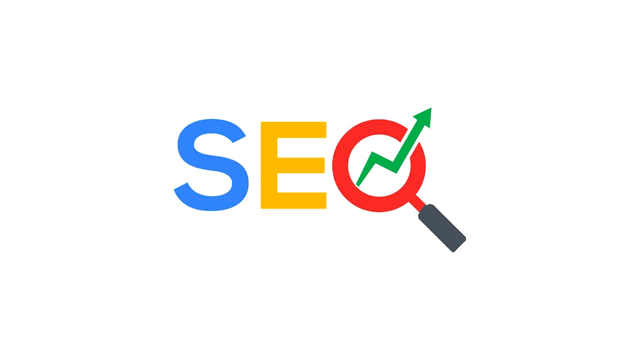LCP: How to Improve Your Website Performance and Scale Your Traffic
In this article, you will learn what LCP is and how to optimize your website to improve performance and scale your traffic.

In an increasingly digital world, website performance has become a critical factor for the success of a business. A slow website can lead to a negative user experience and result in increased bounce rates and lower conversions.
To measure website performance, Google has introduced a number of metrics, including LCP, which stands for Largest Contentful Paint. LCP measures the time it takes to render the largest contentful element on a web page.
In this article, we will explain what LCP is and how to optimize your website to improve performance and scale your traffic.
What is LCP?
LCP measures the time it takes to render the largest contentful element on a web page. The largest contentful element is typically an image, video, or large block of text that appears in the top of the page, in the visible area without scrolling.
A fast LCP helps create a positive user experience by allowing users to see the main content of the page in a timely manner.
How is LCP measured?
LCP is measured in milliseconds. A LCP score of less than 2.5 seconds is considered good, while a score of more than 4 seconds is considered poor.
Here is how LCP is measured:
- The browser starts loading the web page.
- The browser determines which element is the largest contentful element on the page, the element with the largest size that appears in the visible area.
- The browser starts downloading the largest contentful element on the page.
- The browser starts rendering the largest contentful element on the page.
- The browser considers the largest contentful element on the page as rendered when 50% of its size has been rendered.
Why is LCP important?
LCP is important for two main reasons:
- Creates a positive user experience: A fast LCP helps create a positive user experience by allowing users to see the main content of the page in a timely manner.
- Can improve search engine rankings: Google has made LCP a ranking factor for mobile search results since May 2021. This means that websites with a good LCP score are more likely to appear high in mobile search results.
How to optimize your website for LCP
Here are some tips for optimizing your website for LCP:
- Reduce the size of images and videos: Images and videos are often the largest elements on a web page. Reducing their size can improve page load time and reduce the time it takes to render the main content.
- Use optimized images and videos for the web: There are a number of image and video formats that are optimized for the web. Using these formats can reduce the size of your files without compromising image or video quality.
- Load images and videos asynchronously: Asynchronously loading images and videos allows the browser to start rendering the main content of the page before the images and videos are fully loaded.
- Reduce the complexity of the page's code: Complex code can slow down page load time. By reducing the complexity of the code, you can improve page load time and reduce the time it takes to render the main content.
- Use a CDN (Content Delivery Network): A CDN serves page content from servers distributed around the world. This can improve page load time for users located in different parts of the world.
LCP is an important metric for website performance. A fast LCP helps create a positive user experience and can improve search engine rankings.
Optimizing your website for LCP can improve the user experience and scale your traffic.
Image extensions optimized for LCP
Here are some examples of image extensions that are optimized for the web:
- JPEG: JPEG is a lossy image format, which means that some data is lost during compression. This can lead to a reduction in image quality, but it can also significantly reduce file size.
- PNG: PNG is a lossless image format, which means that no data is lost during compression. This preserves the original image quality, but file sizes are generally larger than JPEG.
- WebP: WebP is an image format developed by Google. It is a lossy format that can offer an image quality similar to JPEG with reduced file size.
To reduce the size of images, you can use an image compression software. There are many tools available for free or for a fee.
Tips for optimizing images for the web:
- Use an appropriate image format for your content. For images with many colors, such as photos, JPEG is a good choice. For images with few colors, such as logos, PNG may be a better choice.
- Resize images to the desired size. Do not load images larger than necessary.
- Avoid using images with transparency. Transparency can increase file size.
- Compress images without losing data. If possible, use a lossless image format, such as PNG.
Examples of how to load images and videos asynchronously:
- Use a plugin or an asynchronous loading service. There are many plugins and services available that allow you to load images and videos asynchronously.
- Add an
asyncattribute to images and videos. This will prevent the browser from blocking page loading until the images and videos are fully loaded.
Tips for reducing the complexity of page code:
- Avoid unnecessary code. Remove any code that is not necessary for the operation of your website.
- Use a framework or a CMS. A framework or a CMS can help you create more efficient websites.
- Optimize code for the web. Use code optimization techniques to reduce file size and improve performance.
Examples of how to use a CDN:
- Sign up for a CDN service. There are many CDN services available.
- Add the CDN code to your website. The CDN code will allow you to use the CDN servers to serve the contents of your page.
Tips for choosing a CDN:
- Consider your geographic location. If your website is popular in a particular region, choose a CDN that has servers in that region.
- Consider your budget. CDN services can have different costs.
- Consider the features offered by the CDN service. Some CDN services offer advanced features, such as code caching and data compression.
I hope these examples are helpful for optimizing your website for LCP.

















